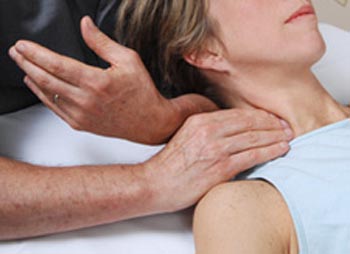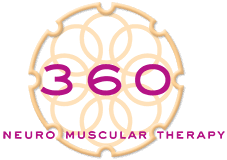Whiplash
Presenting symptoms
 A 60 year-old woman with mild pre-existing cervical spine osteoarthritis was recently involved in a motor vehicle accident. She was referred by her chiropractor for additional soft-tissue therapy. The pain in her upper shoulders and neck had become so unbearable that she was considering taking early retirement from her job as a dental assistant.
A 60 year-old woman with mild pre-existing cervical spine osteoarthritis was recently involved in a motor vehicle accident. She was referred by her chiropractor for additional soft-tissue therapy. The pain in her upper shoulders and neck had become so unbearable that she was considering taking early retirement from her job as a dental assistant.
Evaluation, clinical reasoning & treatment strategizing
The damaging effects of cervical acceleration / deceleration (whiplash) injuries can occur with even slight fender-benders. In one study, 21% of women developed widespread chronic pain after CAD injury. Early manual treatment intervention is critical to minimize long-term soft-tissue damage. In this case, we observed an increased forward head posture and greatly reduced cervical range of motion (stiffness), extreme tenderness, and fear avoidance (kinesiophobia) all of which can be complications of whiplash injury.
Treatment
The first treatment aim was to reduce pain. Trigger points were found and deactivated in the trapezius, sternocleidomastoid, levator scapulae, semispinalis capitis, the splenii, the scaleni, and the deep neck flexors. Other posturally related muscles, such as subscapularis, serratus anterior, and pectoralis major/minor, also were treated. Balance of the cervical musculature was emphasized. Gains were reinforced via strengthening the weak anterior neck muscles and lengthening the tight posterior sub-occipital muscles.
Outcomes and Follow-up
Recommendations were made for increasing intrinsic neck strength and improving work posture. The patient progressed slowly by combining NMT with chiropractic treatment. After three months, her pain reduced enough to allow her to return to work full-time. She receives monthly NMT as part of a preventive maintenance plan.







